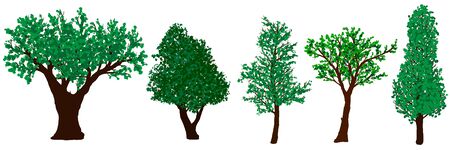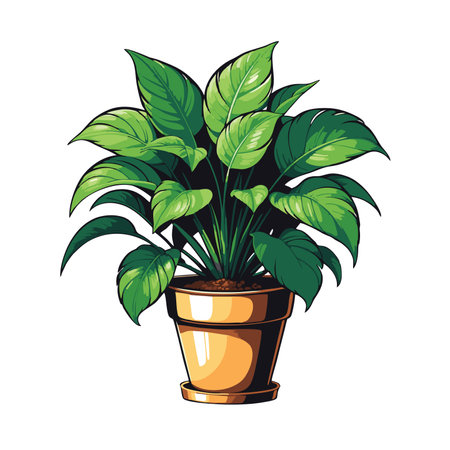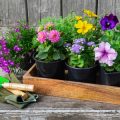1. Pruning at the Wrong Time
One of the most common mistakes new gardeners make is pruning or trimming plants without thinking about their natural growth cycle. While its tempting to grab the shears as soon as you see overgrowth, timing really matters when it comes to healthy plants.
Trimming at the wrong time—especially in late fall or early spring—can actually do more harm than good. For many plants, this is a period of dormancy or early regrowth. Cutting them back during these times can stress the plant, reduce the number of flowers or fruits it produces, and even leave it vulnerable to frost damage.
Why Timing Matters
Plants go through seasonal cycles just like animals do. Understanding these cycles helps you choose the best time to prune:
| Season | Plant Activity | Recommended Action |
|---|---|---|
| Winter (Dormant) | Most deciduous plants are resting | Good for structural pruning, but avoid for cold-sensitive plants |
| Early Spring | Buds begin forming | Avoid pruning spring-flowering shrubs; may remove flower buds |
| Late Spring to Summer | Active growth period | Best time for shaping and light maintenance trimming |
| Fall | Growth slows down; preparing for dormancy | Avoid heavy pruning; open cuts may not heal before frost |
Tips to Avoid This Mistake
- Know your plant: Research whether your plant blooms on old wood (last year’s growth) or new wood (this year’s growth).
- Watch the weather: Avoid pruning right before a freeze, which can damage exposed areas.
- Create a garden calendar: Mark optimal pruning times for each plant species in your yard.
A little research goes a long way. By understanding when your plants grow and bloom, you’ll help them thrive instead of holding them back.
2. Using Dull or Dirty Tools
One common mistake beginners make when pruning or trimming plants is using tools that are dull, dirty, or even rusty. While it might seem like a small detail, the condition of your tools can have a big impact on your plants’ health and growth.
Why Tool Condition Matters
Clean, sharp tools are essential for making healthy cuts. When you use dull blades, they tend to crush or tear the stems instead of slicing cleanly through them. This kind of damage makes it harder for the plant to heal and can leave it vulnerable to pests and diseases.
Dirty or rusty tools are even worse—they can carry bacteria, fungi, or viruses from one plant to another. That’s how diseases spread quickly in gardens, especially if youre working with multiple plants or varieties.
Common Issues Caused by Poor Tool Maintenance
| Problem | Cause | Result |
|---|---|---|
| Torn or crushed stems | Dull blades | Slower healing, increased stress on plant |
| Disease transmission | Dirty or contaminated tools | Bacterial and fungal infections spread between plants |
| Poor cut accuracy | Rusty or sticky blades | Ineffective pruning and uneven growth |
Simple Tips to Keep Your Tools in Top Shape
- Sharpen regularly: Use a sharpening stone or file to keep blades sharp.
- Clean after each use: Wipe down with rubbing alcohol or soapy water to remove sap and debris.
- Dry completely: Prevent rust by drying tools thoroughly before storing them.
- Oil moving parts: Apply a light coat of oil to hinges and blades to keep them smooth and rust-free.
Taking just a few minutes to maintain your gardening tools can go a long way in protecting your plants and ensuring cleaner, healthier cuts every time you prune.

3. Over-Pruning or Under-Pruning
Striking a balance is key when it comes to pruning. One of the most common mistakes beginners make is either removing too much or too little from their plants. Both can lead to problems that affect plant health and performance.
What Happens When You Over-Prune?
Over-pruning means cutting back too many branches, stems, or leaves at once. While it might seem like youre giving your plant a fresh start, this can actually stress the plant out. Removing too much foliage reduces the plant’s ability to photosynthesize, which can slow down growth and even lead to dieback.
Common Signs of Over-Pruning:
- Stunted growth
- Sunburned leaves due to sudden exposure
- Weak or spindly new growth
- Fewer flowers or fruits
What Happens When You Under-Prune?
On the other hand, under-pruning—or not pruning enough—can leave your plant looking messy and unhealthy. Without regular trimming, dead or diseased branches stay on the plant, air circulation decreases, and pests or fungal issues become more likely. It can also limit flowering or fruit production in certain plants.
Common Signs of Under-Pruning:
- Crowded or tangled branches
- Poor airflow through the plant
- Excessive shade within the canopy
- Reduced blooms or fruit yield
Finding the Right Balance
The key is learning what your specific plant needs. Some species thrive with light, frequent pruning, while others only need occasional shaping. Here’s a quick comparison to help you understand the differences between over-pruning and under-pruning:
| Pruning Style | Risks | Results |
|---|---|---|
| Over-Pruning | Stress, reduced energy production, sun damage | Weak growth, poor flowering/fruiting |
| Under-Pruning | Poor airflow, increased disease risk, overcrowding | Tangled shape, fewer blooms/fruits |
The best way to avoid both extremes is by observing your plants regularly and making small cuts as needed throughout the growing season. Always use clean, sharp tools and research your specific plant type before making major cuts.
4. Ignoring Plant Type and Growth Habit
One of the biggest mistakes beginners make when pruning or trimming plants is treating all plants the same. While it might seem convenient to use a one-size-fits-all approach, each plant has its own unique growth pattern, blooming cycle, and pruning needs. Ignoring these differences can lead to poor results like stunted growth, fewer flowers, or an odd-looking shape.
Understand Your Plant’s Growth Habit
Some plants grow upright, others spread out, and some climb. Recognizing whether your plant is a shrub, tree, vine, or perennial helps you decide how and when to prune it. For example, cutting back a climbing rose the same way youd prune a boxwood shrub could prevent it from flowering properly.
Know When Your Plant Blooms
Whether a plant blooms on “old wood” or “new wood” is key information for timing your pruning correctly. Pruning at the wrong time can remove flower buds before they even get a chance to bloom.
Old Wood vs. New Wood: What’s the Difference?
| Bloom Type | Description | Best Time to Prune |
|---|---|---|
| Old Wood | Blooms on last years growth | Right after flowering in late spring or early summer |
| New Wood | Blooms on current seasons growth | Late winter or early spring before new growth starts |
Examples:
- Old Wood: Lilacs, Forsythia, Hydrangea macrophylla (Bigleaf Hydrangea)
- New Wood: Butterfly Bush, Roses (most types), Panicle Hydrangea (Hydrangea paniculata)
If youre unsure what kind of wood your plant blooms on, check the plant tag if available or look it up online using the specific variety name. Taking a few minutes to research your plants habits can save you from months of waiting for blooms that never come.
5. Improper Cutting Technique
One of the most common mistakes beginners make when pruning or trimming plants is using the wrong cutting technique. It might seem like all cuts are the same, but how and where you cut can have a big impact on your plant’s health and appearance.
Making incorrect or random cuts can leave plants vulnerable to pests and diseases. Open wounds that don’t heal properly invite unwanted bugs and fungal infections, which can spread quickly through the plant. To avoid this, it’s important to learn proper cutting methods.
How to Make the Right Cut
Always cut just above a node or bud—the small bump on a stem where leaves or branches grow. This encourages healthy new growth in the right direction and helps maintain the plant’s natural shape.
Recommended Cutting Angle
Cuts should be made at a 45-degree angle, sloping away from the bud. This angle helps water run off the cut area instead of collecting on it, which reduces the risk of rot or disease.
| Incorrect Cut | Why Its a Problem |
|---|---|
| Flat cut below a bud | Prevents regrowth and invites disease |
| Jagged or torn cut | Leaves an open wound that heals poorly |
| Cut too far above a bud | Creates dead wood that wastes plant energy |
Tips for Clean Cuts
- Use sharp, clean pruning shears to avoid crushing stems.
- Disinfect tools between plants to prevent spreading disease.
- Avoid trimming when plants are wet—moisture can spread pathogens.
By using proper cutting techniques, you’ll help your plants stay strong, healthy, and beautiful throughout the growing season.


